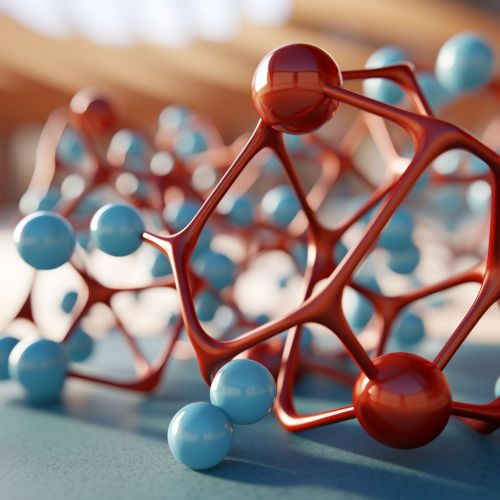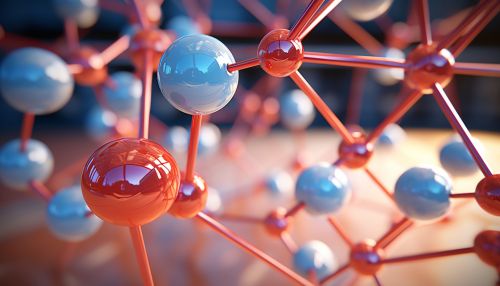Molecular Modeling
Introduction
Molecular modeling encompasses all theoretical methods and computational techniques used to model or mimic the behavior of molecules. The techniques are used in the fields of computational chemistry, drug design, computational biology and materials science for studying molecular systems ranging from small chemical systems to large biological molecules and material assemblies.
History
The history of molecular modeling can be traced back to the development of analytical mechanics and quantum mechanics in the 18th and 19th centuries, respectively. The first molecular models were physically constructed based on known geometric structures. In the early 20th century, with the advent of quantum mechanics and the development of its applications in chemistry, a theoretical foundation for molecular modeling was established. The first computer-based molecular models were developed in the 1950s and 1960s with the availability of increasingly powerful computers.
Theoretical Background
Molecular modeling techniques are based on theories of physics that describe molecular systems. These include quantum mechanics, molecular mechanics, statistical mechanics, and molecular dynamics. Each of these theories provides different levels of approximation to the real behavior of molecules, and the choice of theory depends on the particular system being studied and the specific properties of interest.


Quantum Mechanics
Quantum mechanics is the most accurate theory for describing the behavior of molecules, especially small molecules and those involving light atoms. In quantum mechanics, the electrons and nuclei of a molecule are treated as quantum particles, and their behavior is described by wavefunctions. The properties of a molecule, such as its energy, dipole moment, and vibrational frequencies, can be calculated by solving the Schrödinger equation for the wavefunctions of the molecule.
Molecular Mechanics
Molecular mechanics is a simpler theory than quantum mechanics, and it is often used for larger molecular systems. In molecular mechanics, the electrons of a molecule are not explicitly considered, and the nuclei are treated as classical particles. The potential energy of a molecule is calculated as a sum of energy terms that represent different types of interactions, such as bond stretching, angle bending, and non-bonded interactions.
Statistical Mechanics
Statistical mechanics is a theory that relates the microscopic properties of individual molecules to the macroscopic properties of a system of molecules. It is used in molecular modeling to calculate thermodynamic properties, such as enthalpy, entropy, and free energy, from the properties of individual molecules.
Molecular Dynamics
Molecular dynamics is a computational method based on Newton's laws of motion for predicting the time-dependent behavior of molecular systems. It is used in molecular modeling to simulate the physical movements of atoms and molecules, and to study processes such as protein folding, chemical reactions, and the diffusion of molecules in liquids.
Applications
Molecular modeling has a wide range of applications in various fields. In computational chemistry, it is used to study the structures and properties of molecules, and to predict the outcomes of chemical reactions. In drug design, it is used to design new drugs and to predict their interactions with biological targets. In computational biology, it is used to study the structures and functions of biological molecules, such as proteins and nucleic acids. In materials science, it is used to design new materials and to study their properties.
Challenges and Future Directions
Despite the success of molecular modeling in many areas, there are still many challenges to be overcome. One of the main challenges is the accurate description of electronic correlation in quantum mechanics. Another challenge is the treatment of large molecular systems, which requires significant computational resources. Future directions in molecular modeling include the development of new methods for treating electronic correlation, the use of machine learning techniques for predicting molecular properties, and the integration of molecular modeling with experimental data.
